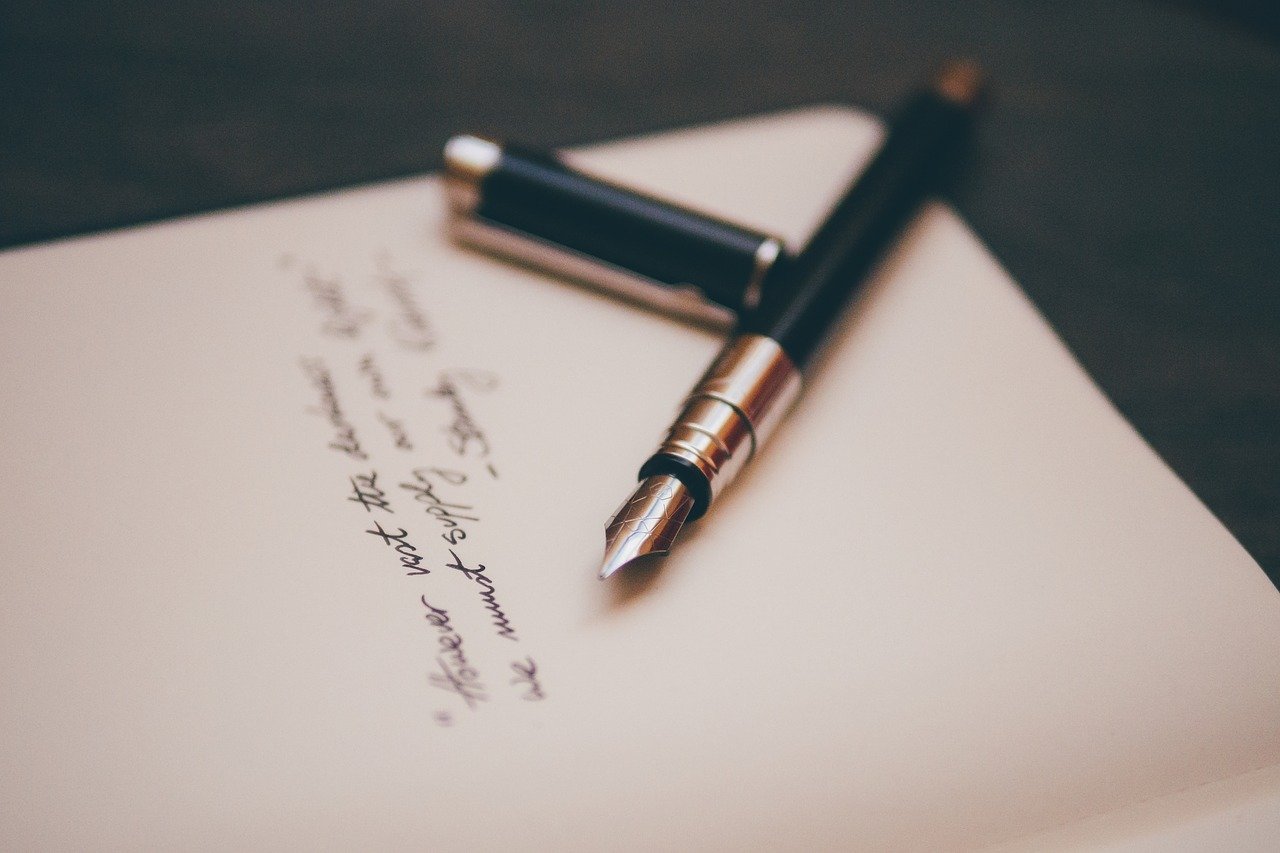How to learn calligraphy? The first step along the way is to get the right equipment, including the best calligraphy pens. All such basic calligraphy guides recommend these pens because they don’t contain ink inside and can’t do any damage – instead, you dip them into a special container while you write and benefit from their flexibility to experiment with different line options. This way, your pen will never corrode or clog, despite the vast amount of different ink you have to use to complete your project.
How to use calligraphy pens? Here are the instruments you will need:
- Feathers
- Pen holders
- Paper suitable for fountain pens
- Ink
- Brush pens
1. Broken feather
This is the most inconspicuous beginner’s mistake, which is usually not focused on, but because of it, all the work can go to the trash can already at the initial stage. This is an obvious mistake, but you need to know about it first. Let’s see why. You must check each pen “from and to” for all parameters and characteristics. The teeth must be strictly parallel to each other, symmetrical, without a gap between them, the tip of the pen should in no case be deformed, broken, bent if you run your fingernail along the edge of the pen – there should be no recesses or burrs – a strictly even, smooth surface. Sometimes a marriage can be detected only when writing – the pen should not scratch and cling to the paper.
2. Wrong paper
Suitable paper – I don’t mean here that it is necessarily expensive paper. Unsuitable read as rough or coated. When you are just starting to write with a pen, for objective reasons you simply do not have enough dexterity, experience, the number of pens (which you don’t mind breaking), and the banal patience to write on unsuitable paper. There will be no progress, the ink will blur or the pen will get dirty, and you will quickly lose interest in this art, because. you will not notice the gradual progress in training and will not be able to understand the reasons for its absence. After all, it’s not about you. For a beginner, it is important to constantly train, and this should be done on smooth paper, but given the expense, not very expensive.
TIP: A good practice paperweights 90-120 g/m², you can put a sheet of calligraphy under this paper. Cotton is great, coated paper is not suitable, it will stain the pen.
3. Bad mascara
There is such a thing as “bad mascara”. Often cheap mascara does not meet the stated requirements, although professionals can create masterpieces with it. But we are learning! Of course, ink can be determined empirically, by trial and error, but I recommend asking experienced calligraphers in advance what kind of ink they use for drafts and then trying it. Understand that the chemical reaction of the pen to the ink is inevitable, because. the pen is metallic, however, some ink can instantly “kill” your pen, and some will let it live longer (which is very important at the training stage!). Do not experiment at the beginning of your training. Seriously, do you want to soak feathers for days or scrape them with a file/knife for half a day, with the likelihood of bending or deforming, or do you want to buy a huge amount of new ones? Of course, you can!
TIP: walnut mascara. This is a win-win option in many respects: it is stored in granules for a long time, beautiful classic color, thin, elegant, ideal in terms of adhesion to paper and pen reaction, and, importantly, not expensive and popular.
4. Change letters
An easy way to give your writing an experienced look is to change the slope. Changes like this will help change the feel of your letter as well as the message it conveys. Is it formal, dynamic, or eccentric? Think about it! You can also change the form of letters, make them a little thinner, rounder, or even connect them differently. Do this a few times and you will surely come up with a completely new design.
5. Basic strokes of calligraphy
Thin upward strokes are easy to draw as you effortlessly hold the pen and move it up. Thick strokes, on the other hand, require more pressure as the pen moves down. Before you begin, dip the pen deep into the ink bottle, making sure the breathing hole on the back of the pen is completely closed. Wipe off any excess ink on the side and you can start writing.
Useful Tricks
You’ve just started monetizing your calligraphy skills, but something still looks completely wrong. You may find the following tips helpful:
If you have problems with strokes:
Instead of doing it like everyone else, try faux calligraphy and see how the strokes look and feel. Write neatly and fill in the gaps. Practice on the printable sheets until you can make the letters perfectly shaped. It’s not hard to find samples of basic strokes and uppercase letters online.
Start with lighter pencil drawings and trace them slowly with the pen. Once the ink is dry, erase any traces of the pencil.
Large letters make it easier to see critical errors.











